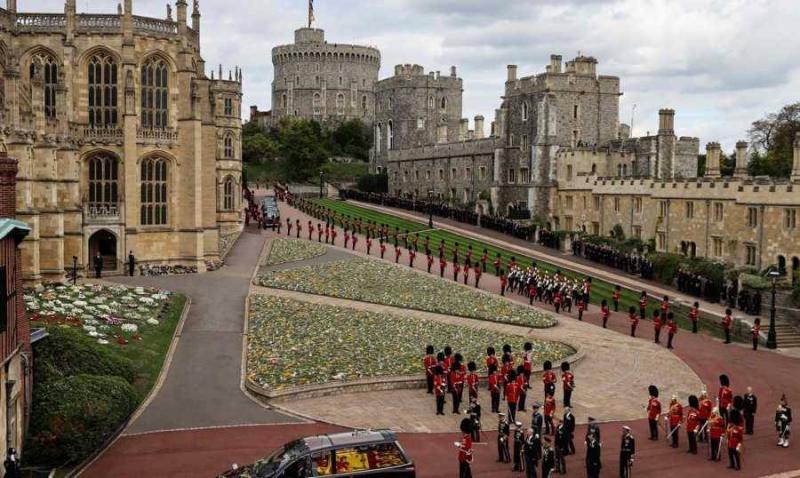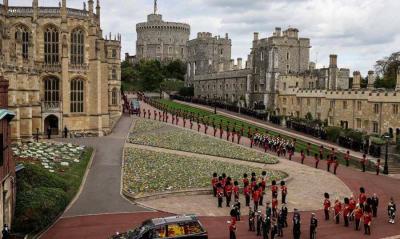At the end of a formal funeral watched by millions around the world, Queen Elizabeth arrived at Windsor Castle to be buried in a small church during a private ceremony. Windsor Castle was built by William the Conqueror in 1066, and it has been rebuilt and redesigned over the centuries; it is the oldest and largest inhabited castle in the world. The castle, located just outside London, was the queen's main weekend retreat and her preferred residence in her later years.
A massive fire caused significant damage to the castle in 1992, which the queen described as a "terrible year" due to a series of scandals that shook the royal family. Windsor Castle is also the final resting place for more than 12 English and British kings and queens. Most of them are buried in St. George's Chapel, including Henry VIII, who died in 1547, and Charles I. The queen will be buried in the George VI Memorial Chapel, located near the main complex of St. George's Chapel. She commissioned the building of the memorial chapel in 1962 and named it after her father. King George and his wife, the Queen Mother, along with their younger daughter, Margaret, are buried there.
Most of the music used during the ceremony will be composed or arranged by William Henry Harris, the main organist at the chapel from 1933 to 1961. He is believed to have taught the queen to play the piano as a child. In 1948, when she was still a princess, the queen received the Order of the Garter—the highest order of chivalry in Britain—at St. George's Chapel, alongside her husband Prince Philip. St. George's Chapel hosted the funerals of Philip, the queen's father, George V, and her grandfather, Edward VII.
Her grandson Prince Harry was baptized there, and he was also married there in 2018. There, Prince William, the new heir apparent, affirmed his Christian beliefs to become a full member of the Church of England. The coffin of Prince Philip, who died on April 9, 2021, is placed in the royal vault to be buried alongside the queen.




